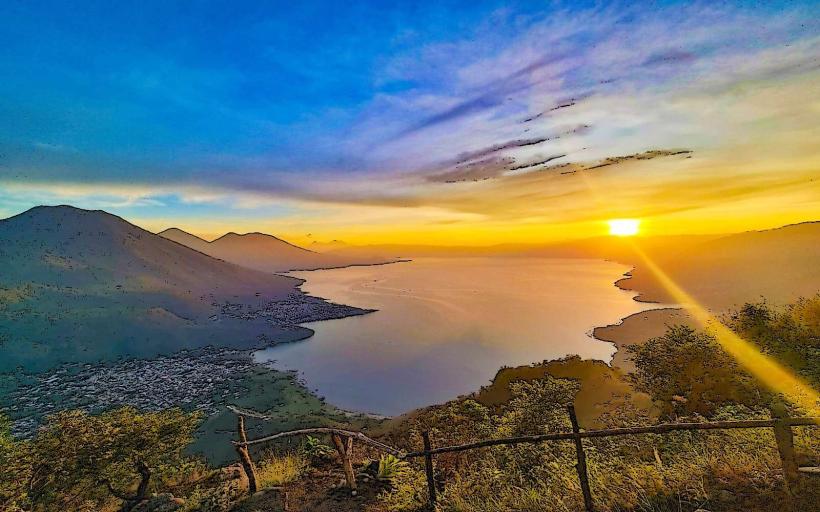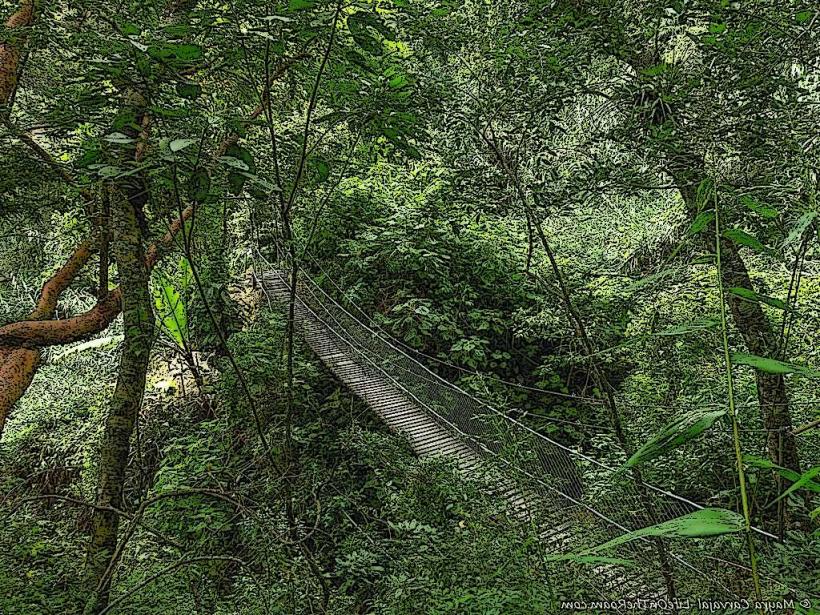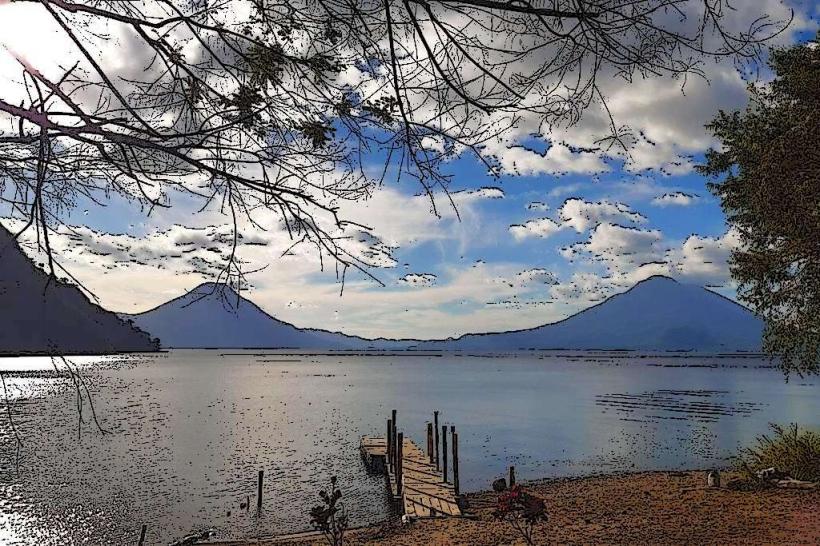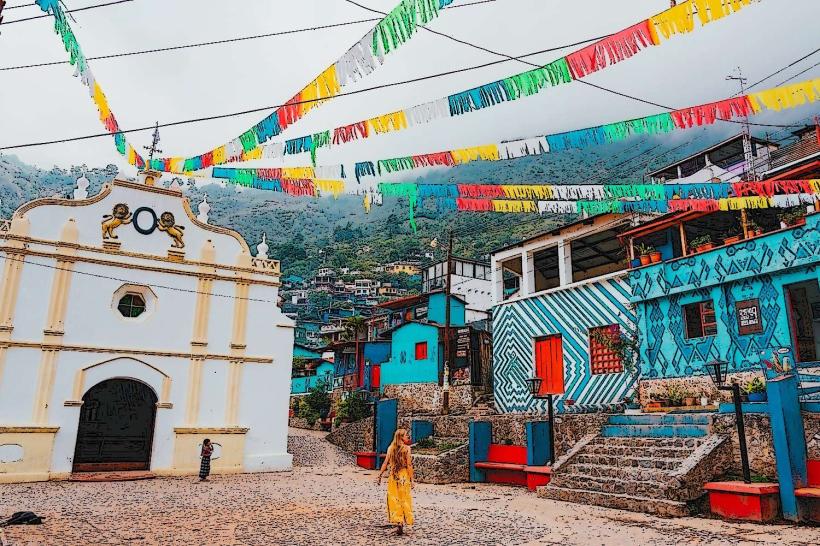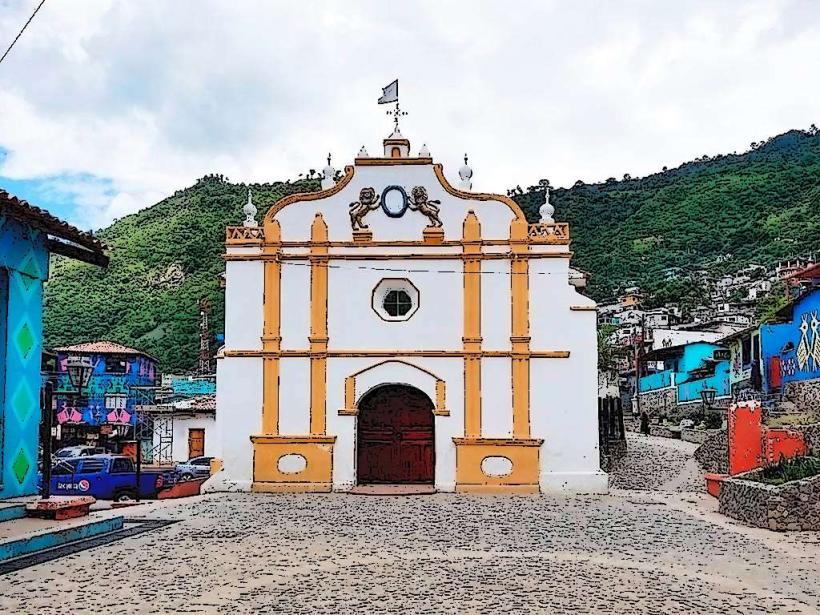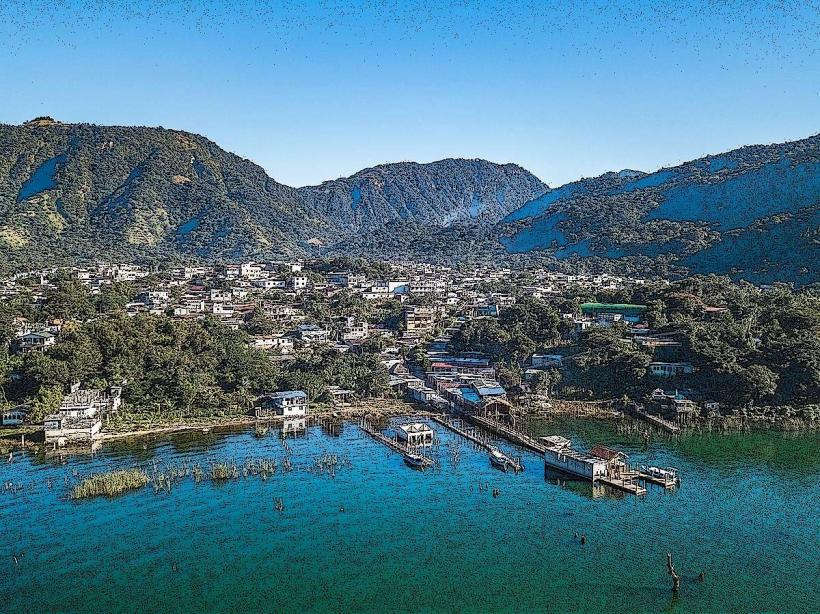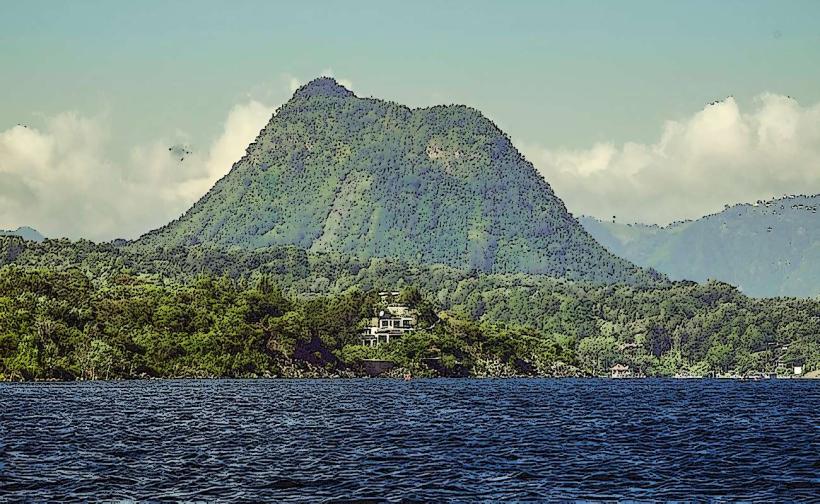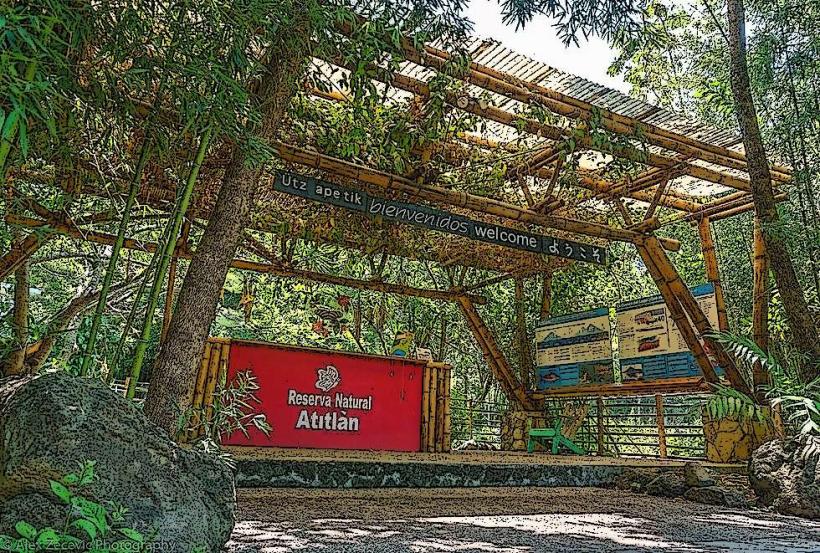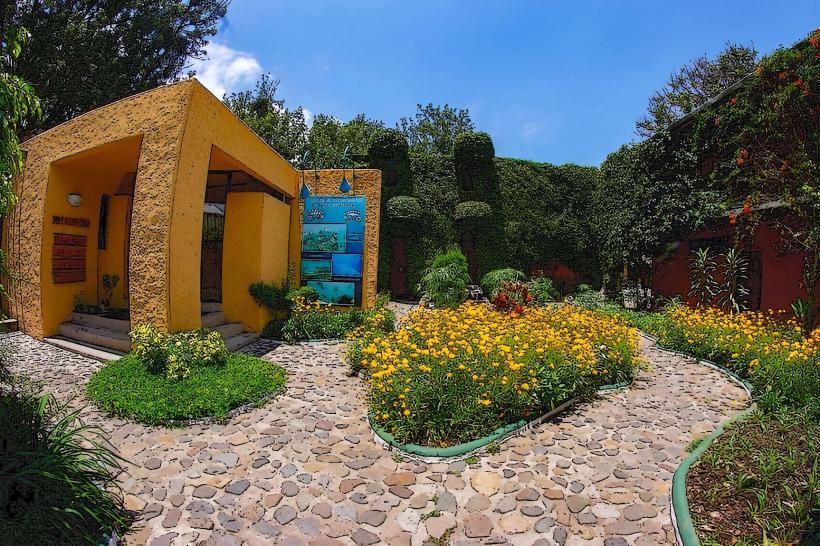Information
Landmark: Lake AtitlánCity: Panajachel
Country: Guatemala
Continent: North America
Lake Atitlán is one of the most scenic and culturally rich locations in Guatemala, often considered one of the most beautiful lakes in the world. Its geographic setting is exceptional, surrounded by towering volcanoes and steep hills that make it visually dramatic. The water in Lake Atitlán is incredibly clear, especially in the mornings when the surface is calm, allowing you to see deep into the lake. The water is also naturally replenished by the rainfall and the surrounding rivers and streams.
Geographic and Geological Features
The lake itself was formed thousands of years ago by volcanic activity. It sits in the caldera of an ancient supervolcano, which collapsed after a massive eruption. Over time, this caldera filled with water, forming what is now Lake Atitlán. The lake’s depth varies, but its deepest point is around 340 meters (1,115 feet). The surrounding landscape, marked by steep slopes and lush vegetation, creates a stunning contrast with the blue waters of the lake.
The three major volcanoes surrounding Lake Atitlán are a prominent feature of the area:
- Volcano Atitlán: The largest and most iconic volcano in the area, standing at 3,537 meters (11,604 feet) above sea level. Its symmetrical shape is a distinctive part of the landscape.
- Volcano San Pedro: Located on the western shore of the lake, it rises to 3,020 meters (9,909 feet). San Pedro is one of the most popular volcanoes for hiking, attracting trekkers who enjoy the challenge of reaching its summit for panoramic views of the lake and surrounding area.
- Volcano Tolimán: Located on the southern shore, it stands at 3,158 meters (10,328 feet) and is the least frequently hiked of the three, though it offers incredible views of the surrounding region.
Panajachel
Panajachel, often referred to as "Pana" by locals, is the main town on the lake and serves as the tourist hub of the region. It is a mix of traditional indigenous culture and modern tourism infrastructure. It has a bustling main street, Calle Santander, which is lined with restaurants, cafes, markets, and shops selling locally made textiles, pottery, and jewelry. Many visitors come here to relax, shop, and enjoy the vibrant atmosphere.
The town has its own unique history, having developed from a small Mayan village into a key trading post. It offers striking views of the lake and volcanoes, especially from the Indian Nose viewpoint, which is famous for stunning sunrise hikes. The local market in Panajachel is also a major attraction, with colorful textiles, fresh fruits, and crafts available for purchase.
Surrounding Villages
The villages around Lake Atitlán are some of the most interesting aspects of the region, as they offer insight into the local indigenous cultures. Each village has its own unique character, language, and customs. The most notable ones include:
San Pedro La Laguna: Located on the western shore, San Pedro is known for its laid-back vibe and attracts many backpackers. It’s home to several hiking trails, the most famous being the hike up Volcano San Pedro, which offers stunning views of the lake and surrounding villages. The village itself has a relaxed atmosphere with many cafes and hostels catering to travelers.
San Marcos La Laguna: San Marcos is known for its focus on wellness, spirituality, and alternative lifestyles. The village is popular with people seeking meditation, yoga, and spiritual retreats, and its peaceful environment makes it ideal for these activities. The landscape here is lush and full of greenery, with numerous eco-friendly accommodations and wellness centers.
Santiago Atitlán: Santiago is the largest village on the lake and one of the most culturally significant. The village is home to a large indigenous Tz'utujil Maya community, and it is a place where traditional customs are still strong. The town’s central plaza is home to the figure of Maximón, a revered folk saint known for his mysterious and controversial nature. Santiago’s colorful markets are filled with traditional textiles and pottery. The village is a great place to learn about the history and culture of the Maya people in the region.
Santa Cruz La Laguna: A smaller village located on the northern shore, Santa Cruz is a peaceful village that’s popular with those looking to escape the busier towns. Its serene environment is ideal for hiking, with trails that connect it to nearby villages. There are also several accommodations that offer spectacular views of the lake.
Jaibalito: This village is accessible by boat from Panajachel or Santa Cruz. It’s quieter and more remote than others, offering a tranquil escape with a few boutique hotels and homes with beautiful views of the lake.
Activities and Hiking
In addition to the stunning boat tours and village hopping, the region offers excellent opportunities for outdoor activities, particularly hiking, bird watching, and water sports.
- Hiking: The volcanoes around the lake are prime destinations for hikers. The San Pedro Volcano hike is one of the most popular, offering stunning views of the lake, the surrounding villages, and the nearby mountains. Similarly, hikes to Volcano Atitlán and Tolimán offer scenic landscapes and a challenge for experienced trekkers.
- Kayaking and Paddleboarding: The clear, calm waters of the lake make it perfect for kayaking or paddleboarding, giving a unique perspective of the surrounding landscapes.
- Birdwatching: The diverse flora and fauna around the lake provide an excellent habitat for birdwatchers. You can spot species such as toucans, herons, and various types of hummingbirds.
Cultural Significance
Lake Atitlán is not just a natural wonder; it’s also a place of deep cultural importance. The indigenous communities surrounding the lake have maintained their traditional ways of life for centuries. The Tz'utujil and Kaqchikel Maya people continue to practice traditional agriculture, weaving, and other crafts that are integral to their heritage.
The Maximón figure in Santiago Atitlán is one of the most notable symbols of syncretism between indigenous Maya religion and Catholicism. He represents a blend of ancient Maya gods and Catholic saints and is central to the spiritual life in the region. Locals make offerings to Maximón, hoping for blessings or assistance with personal matters, making his shrine a place of pilgrimage for many.
The area also celebrates numerous festivals throughout the year, including the Feast of San Pedro and Feast of Santiago, where visitors can witness colorful processions, dances, and music that are deeply rooted in Maya traditions.
Conclusion
Lake Atitlán and its surrounding towns offer an unforgettable combination of natural beauty, outdoor adventure, and rich cultural heritage. Whether you're seeking a relaxing retreat, an active adventure, or a cultural immersion, the region has something to offer everyone. The lake's tranquility and stunning surroundings have made it a beloved destination for travelers seeking to experience one of Guatemala’s most unique and beautiful places.

